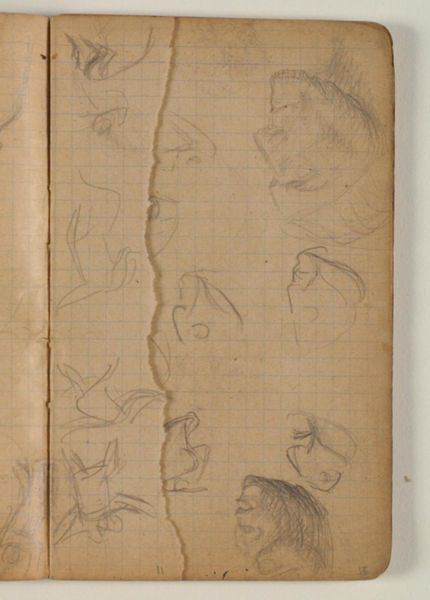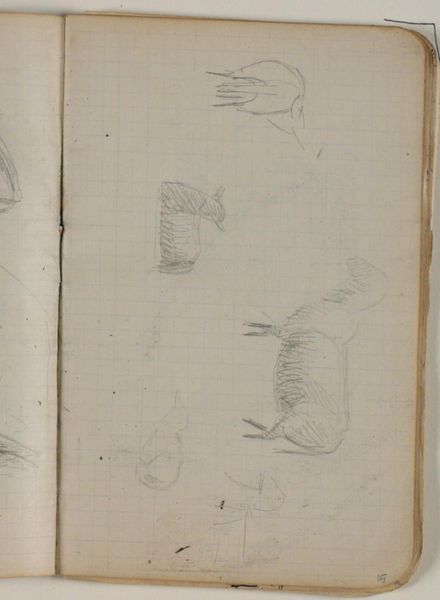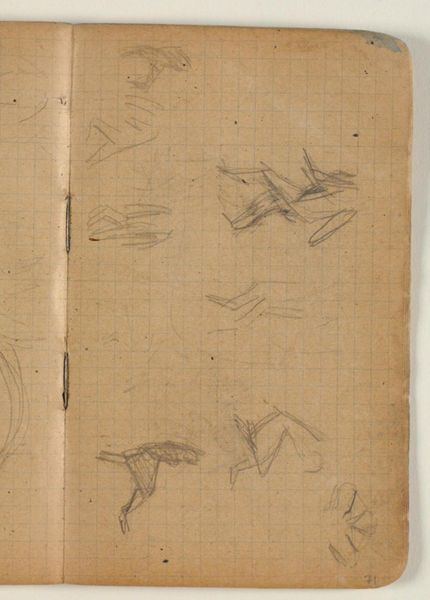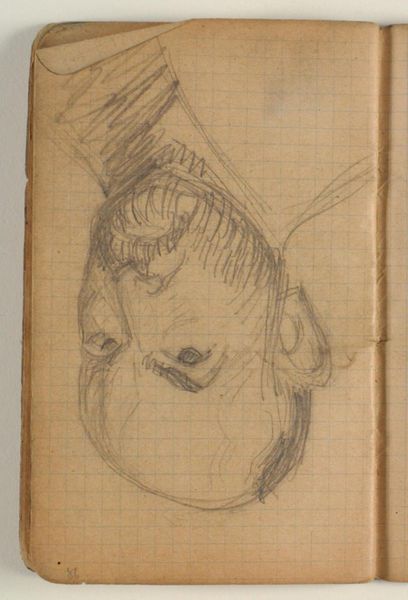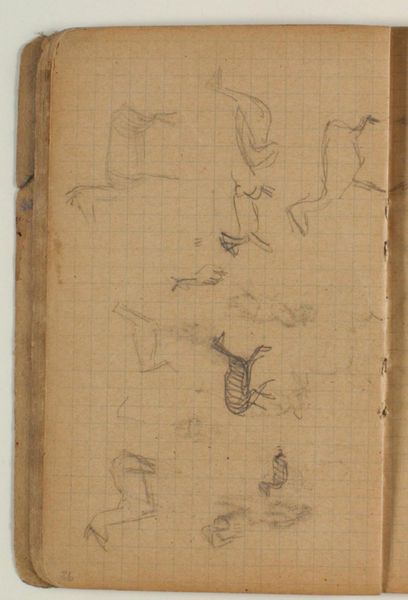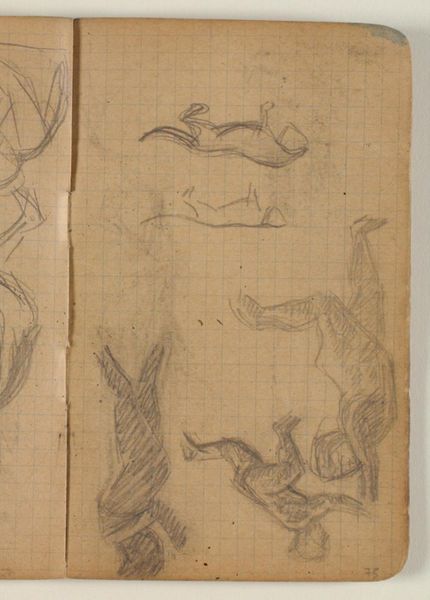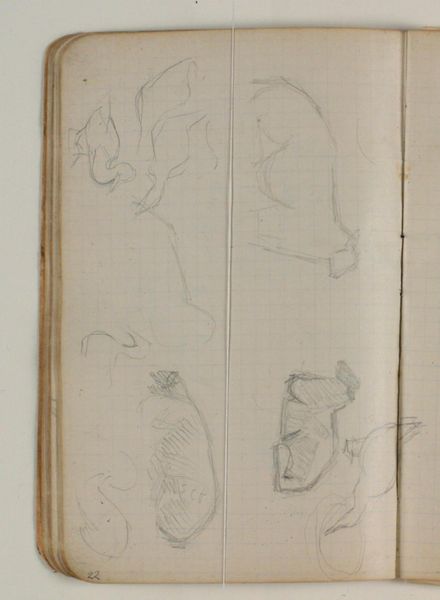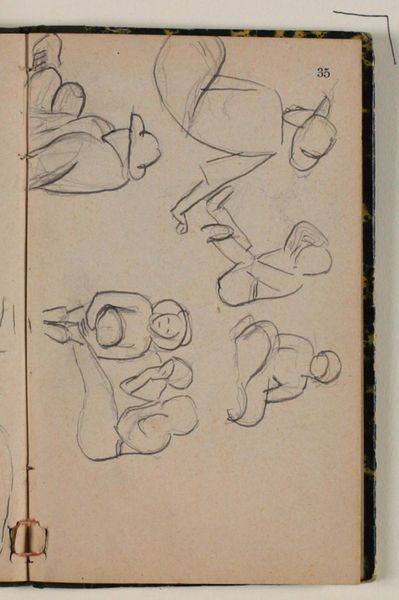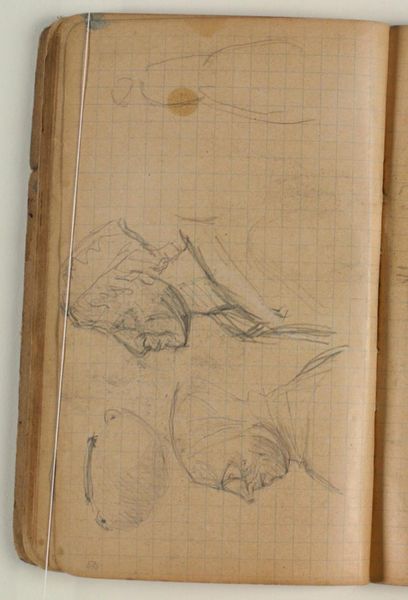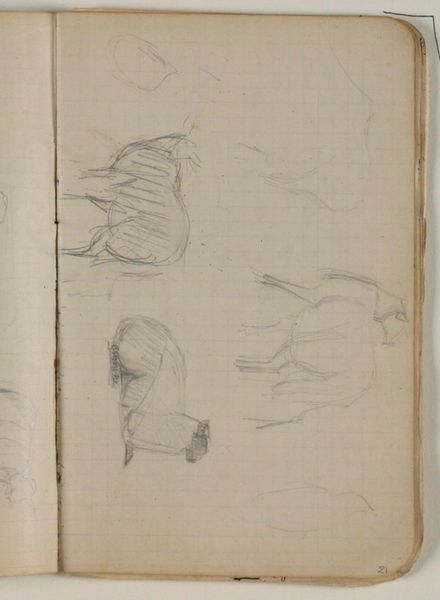
Dimensions: 163 mm (height) x 97 mm (width) (bladmaal)
Editor: This is "Ansigtsskitser," or "Face Sketches," by Niels Larsen Stevns, from 1906. It's a pencil drawing on paper. The collection of quickly rendered faces gives the piece a raw, almost scientific feeling, like a researcher trying to capture fleeting expressions. What do you make of it? Curator: I see a fascinating interplay between academic tradition and emerging modernist sensibilities. Sketchbooks like this weren’t simply private exercises. How do you think the artist perceived their role in documenting the human form and expressions at this time? Editor: Hmm, you’re making me consider its place in society. Was it more for personal study, or perhaps a preparatory work for a larger project, like a statement piece for an exhibition? Curator: Exactly. Think about the rise of social realism. Artists were increasingly interested in capturing authentic representations of everyday life. Could this sheet of sketches, seemingly informal, have contributed to a broader artistic investigation of social types and expressions in early 20th-century Denmark? Also, how would exhibiting ‘unfinished’ work play into that idea? Editor: So it could be that Stevns was using these sketches to study and depict a range of human emotions as a reflection of the changing society around him? That makes me wonder about who he was looking at—did social status impact the poses he chose? Curator: Precisely! These sketches offer a glimpse into how artists used traditional academic techniques to engage with and reflect the evolving social landscape. I appreciate you noticing that the artist probably selected the faces based on status. What was not shown can sometimes reveal more about social structures. Editor: I had been thinking of this as something deeply personal, but you've shown me how even the simplest sketches can hold wider social meanings. Thanks for helping me rethink this work! Curator: And you've helped me to consider Stevns’ approach in a way that challenges some assumptions about academic artistic study. Thanks!
Comments
No comments
Be the first to comment and join the conversation on the ultimate creative platform.
